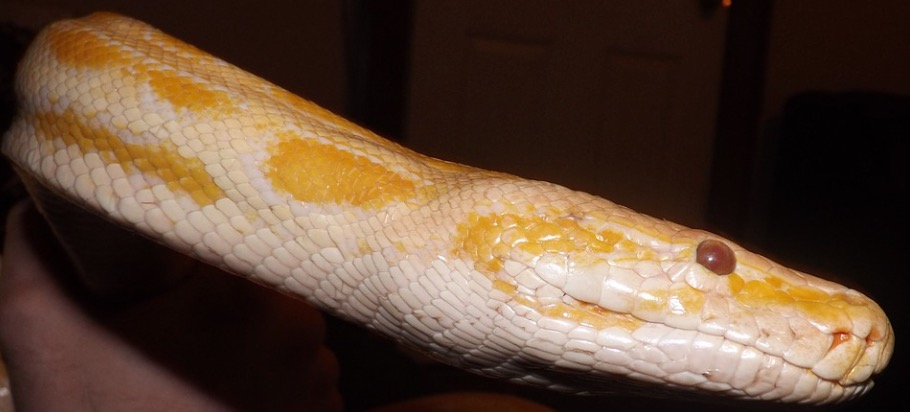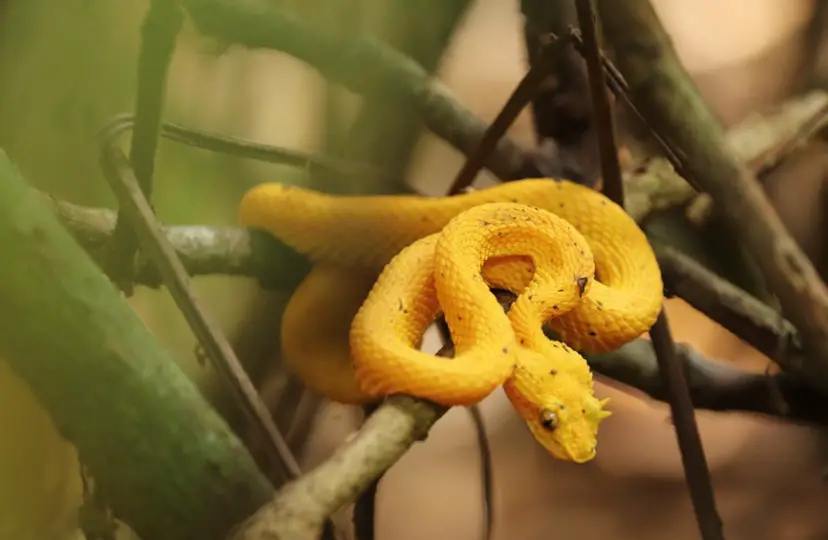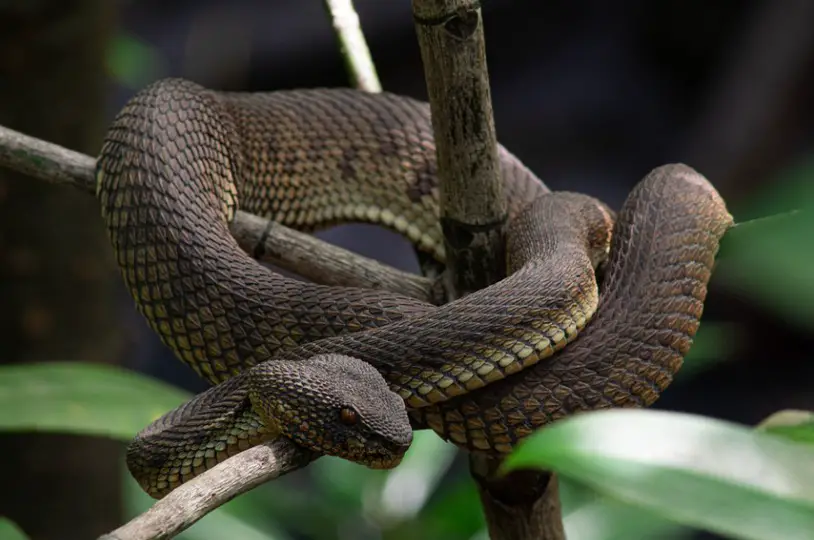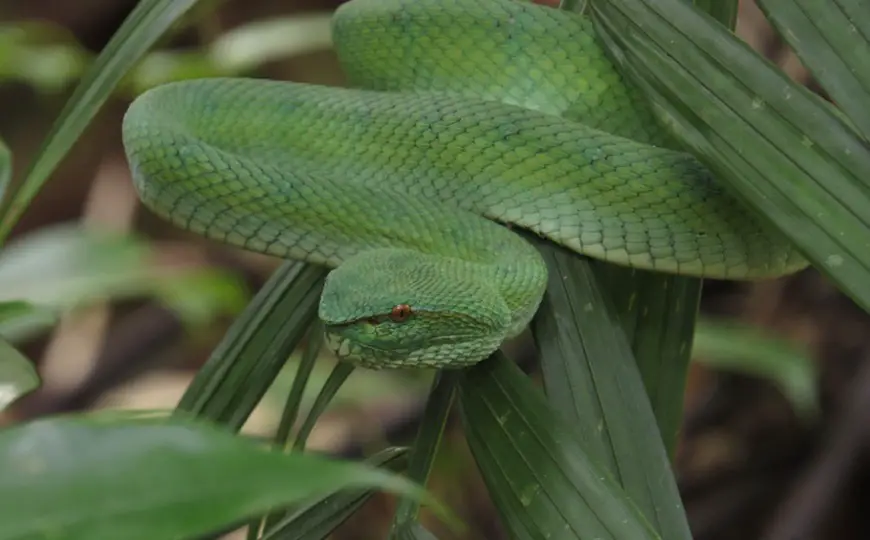Table of Contents
Pit Viper: All You Need To Know
The Pit viper is an ambush predator that belongs to the kingdom of Animalia, phylum Chordata, and class Reptilia. It has 22 genera in the subfamily Crotalinae, and more than 150 species. Its length is adjustable from up to 30 cm to 4 m, and it weighs up to 7 kg. It lives in a variety of habitats, depending on the species. Its lifespan varies by species.

What is Pit Viper?
Pit viper is a popular term for members of the Crotalinae subfamily that have infrared-sensing organs on the front of their faces. From Australia to Arizona, the term “pit viper” refers to approximately 150 distinct species that may be found all over the world in environments as diverse as the desert and the rainforest. Rattlesnakes, cottonmouths, copperheads, moccasins, the white-lipped pit viper, and many other pit vipers belong to this group.

Pit organs on the top lip of a pit viper are used to locate and identify prey. Pit organs detect electromagnetic radiation in the same way as the eyes do. These specialised organs, on the other hand, detect infrared light rather than light in the “visible spectrum” — the wavelengths that humans can perceive. Pit vipers’ pit organs, according to scientists, allow them to “see” body heat, which allows them to evaluate the size and kind of their prey.

Pit vipers have unique muscles surrounding their fangs that help them inject poison more effectively into their victims. Pit viper venom varies by species, and in many cases, it has developed to be most efficient against the prey species on which the pit viper typically feeds.
Pit viper venom contains neurotoxins that cause paralysis, metalloproteinases that damage tissue, and proteins that prevent blood from coagulating, depending on the species. Even in people who are much larger, a pit viper bite can quickly result in death if left untreated.
Fun Facts About Pit Viper!
Whether you’re afraid of pit vipers or fascinated by them, they’re an excellent animal to use to teach several key biological ideas. Let’s look at some of the ways these snakes may aid scientists in learning about other aspects of life.

Pit Viper and Pit Organs
Pit organs may be found in a variety of snakes, not just pit vipers. These unique organs may also be found in boas and pythons. However, both a superficial and genetic examination reveal that these organs have developed many times.
Pit viper pit organs are all identical in shape and structure, suggesting that they have the same genetic basis. Pit vipers’ pit organs are made up of a deep pit with a strongly innervated membrane spread over it. A huge number of neurons in this extremely sensitive region receive a variety of messages from the environment.
These pits can also be seen in boas and pythons, but there is no stretched membrane and the rear of the pit is just very well innervated. Pit vipers have two huge pits on each side of the head, whereas boas and pythons often have many pits on their top lip. These pit organs are so sensitive that even if a pit viper is entirely blind, it can still seek and strike prey.
This has been demonstrated in lab tests in which pit vipers were blindfolded for a short period of time. All of the snakes were still able to hit their prey with pinpoint accuracy. This is only one piece of evidence that shows pit vipers use information from their pit organs to construct mental images, making them as sensitive as or more sensitive than eyes. This sensation might potentially be used by snakes to decide which locations are better for basking or cooling down.

Pit Viper are Ovovivipary
Pit vipers, unlike other snake species that produce eggs, are mostly ovoviviparous. This means that the eggs remain inside the female for several months and mature. The eggs hatch within the female when they are completely mature, then wriggle their way out into the world. Compared to depositing eggs, this mode of reproduction has numerous advantages.
First and foremost, because she carries her eggs with her at all times, the female can readily guard them. This may not be the best technique for snakes with weak defences. If a female is eaten, for example, all of her children perish with her. Pit vipers, on the other hand, are not like other snakes.
They have highly potent venom and are frequently marked with warning colours or, in the case of the rattlesnake, a warning rattle. This, along with their potent venom, aids pit vipers in warding off hazardous predators, making it safer for the female to carry her eggs.
Second, the female can properly regulate the temperature of her eggs at all times (since pit vipers are good at maintaining their body temperature). It might be dangerous to lay eggs in a nest.
Even if the female finds a good nest location before laying her eggs, a variety of factors might lead that site to become unsuitable long after the female has placed her eggs and gone. As a result, ovovivipary is a good tactic for pit vipers.
Pit Viper Citations
- Water relations of an insular pit viper. J Exp Biol . 2019 May 7;222(Pt 9):jeb204065.
- Pit viper envenomation in a barn cat. J Small Anim Pract . 2019 Feb;60(2):131.
- Review of North American pit viper antivenoms. Am J Health Syst Pharm . 2020 Jan 24;77(3):175-187.







